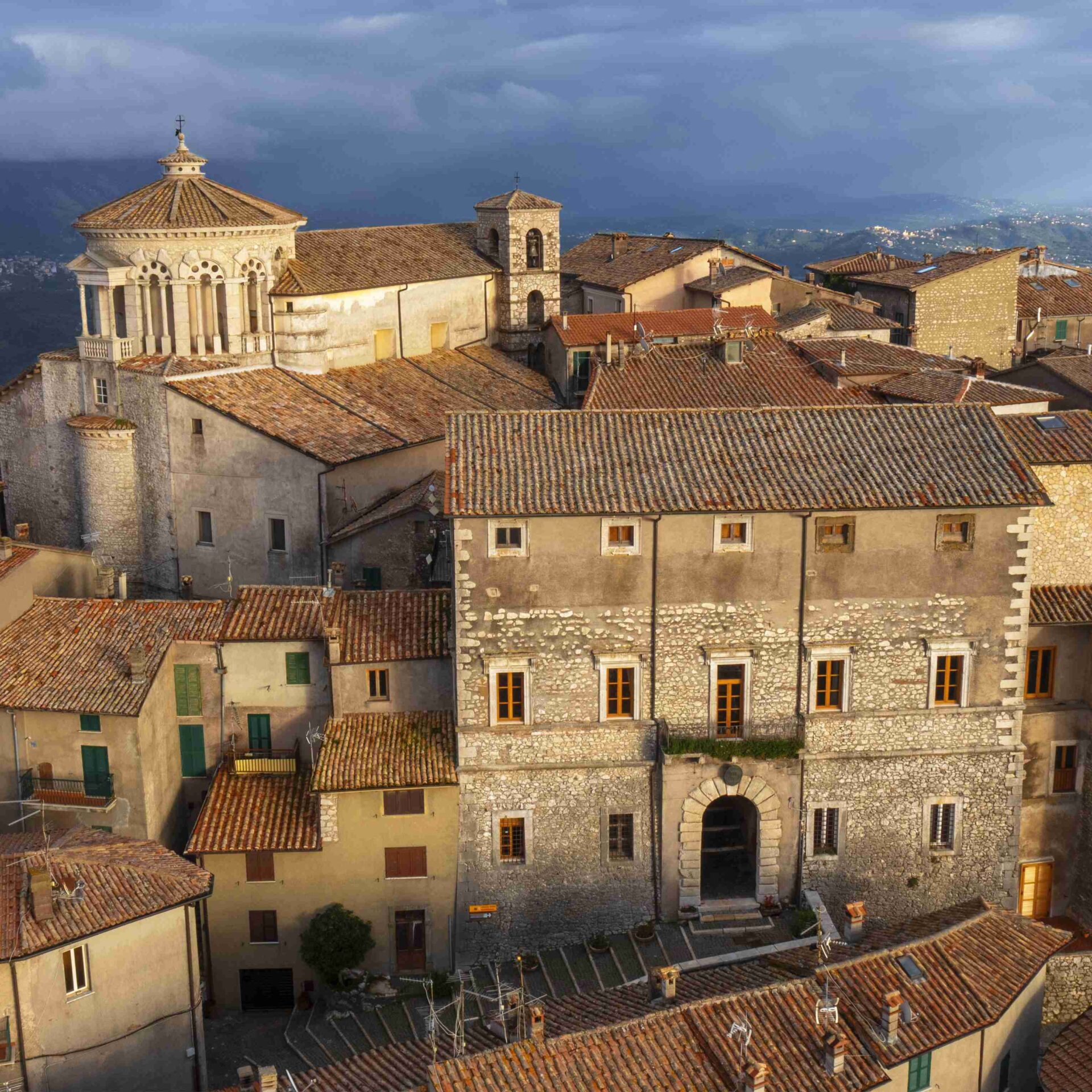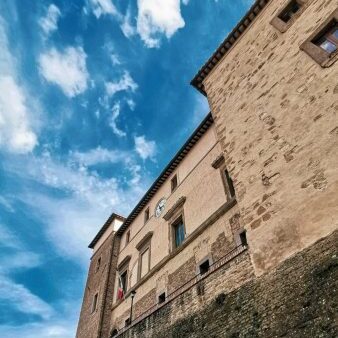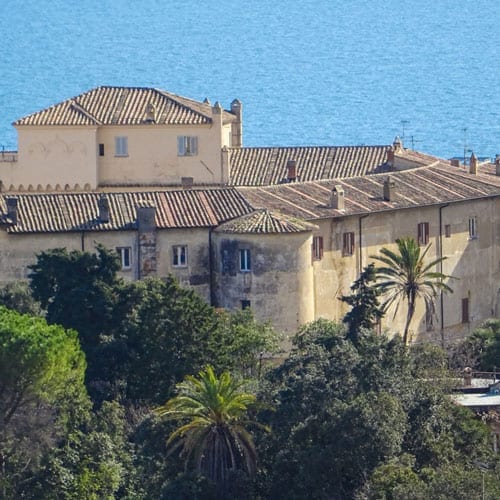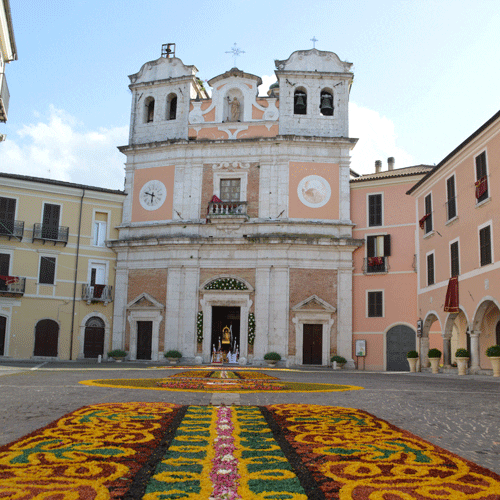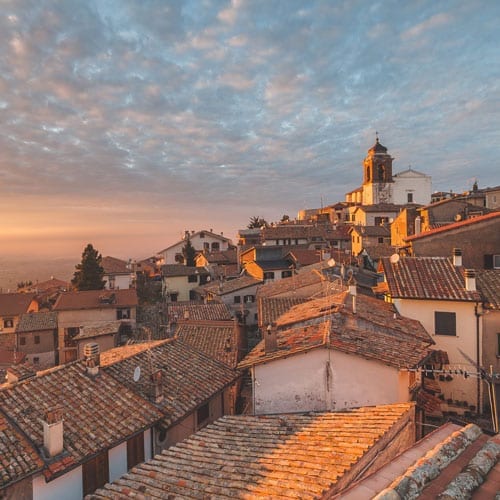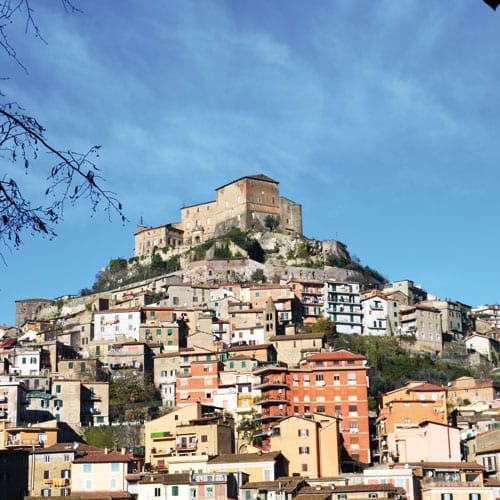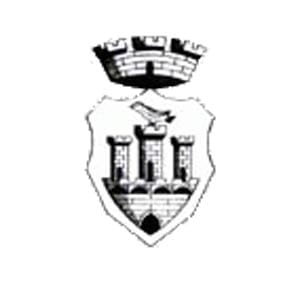 Pico
Pico
MUNICIPALITY OF Pico
(Frosinone District)
Altitude
mt. 192 a.s.l.
POPULATION
2880 (200 in the borgo)
tourist information
Town Hall, Ph. 0776.544012
info@parcoletterariolandolfi.it
www.comunedipico.it
 The origin of the name is uncertain. It may derive from the Celtic “pic”, pointed tip, probably referring to the spur of rock where the castle rises.
The origin of the name is uncertain. It may derive from the Celtic “pic”, pointed tip, probably referring to the spur of rock where the castle rises.
Once you reach the borgo, you can walk through the Garden and the small church of San Rocco, and enter the historical center through Porta San Rocco. Heading towards the Castle and the annexed garden, you can visit the Church of Santa Marina dating back to year 1000; through Via Landolfi you can head to the Church of Sant’Antonino and, after a short distance, pass by the Landolfi House and its garden. The whole historical center is characterized by typical medieval staircases. Worth of note are also the rural areas around the fortified borgo, on which the beautiful Church of Santa Maria del Campo stands, and also the Church of San Francesco, which stands outside the walls, nearby the local Piazza Ferrucci.
Also do not miss to visit the Literary Park® Tommaso Landolfi and the “P. Village” belonging to the network of the Literary Parks of the “Dante Alighieri” Society which presents two different routes, one in the borgo and one over the mountain. The Tommaso Landolfi Park is the first of its kind in the Ciociaria area and the 2nd in Lazio region.
The Literary Park® is a real journey among the most cherished places to Landolfi. Literary suggestions offer the inspiration to explore the mountainous areas that have inspired the writer and make it possible to enhance his work, full of images and fantasies related to the village life.
Oil and wine are the protagonists of the area. The first, with a distinctive unsalted taste, is perfect with a slice of crushed bread or croutons with beans and chicory. Fragrant porcini mushrooms and truffles are harvested in the surrounding mountain forests.From the local livestock meat and cheeses are produced; salami and pork bacon matured according to ancient recipes. The meat here is very good as its production follows an easy-to-find chain, with livestock raised locally. In the local butchers there is the handicraft production of pig meat.
The local cuisine is simple and genuine, based on poor food which become great after the preparation. The typical menu here starts with an appetizer of sausage, cheese, olives, bread and / or pizza, then sagnette (a home-made pasta rolled by hand with water and flour) and beans, tripe or baccalà (codfish). The second course is based on pork or lamb with baked potato and chicory potatoes. Taste also the flavoured soups and the lumache ammucate (“puffed” snails), flavored with the scent of wild mint.
The delight of the local pastry is the typical almond cake and the wine cellar. In the Easter period some traditional sweets are made, such as the pigne, carosello and the torteno.

